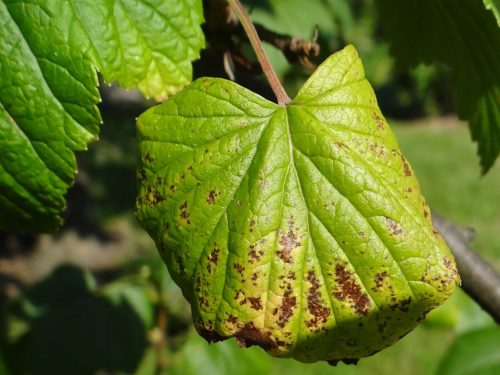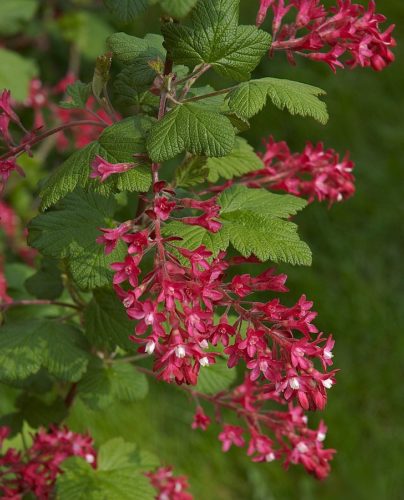Red currant, a deciduous shrub that blooms early in spring with numerous pink flower clusters on the still bare wood.
Also known as:
Flowering currant
Redflower currant
You are viewing the mobile-adapted version of the page.
The one for tablets, laptop and desktop also provides general information, such as origin and cultivation.
Red currant – (Ribes sanguineum), deciduous shrub that blooms early in spring with numerous pendent clusters of pink, tubular flowers on the still bare wood. Red currant ‘King Edward VII’ is a well-known red currant in Great Britain and Ireland. Red cur
Red cur
Plant it in a sunny spot, although it is best to tolerate some shade as well. The shrub likes well-drained soil. Watering in times of drought is necessary. An annual scoop of manure and compost will keep the shrub healthy.
Red cur
Bugs
Deformed leaf: aphids.
Fungi & diseases

Brown spots on the leaf after which leaves fall off prematurely: Currant and gooseberry leaf spot (Drepanopeziza ribis).
Other
Shrub grows very slowly, blooms moderately, leaves remain small, leaves fall off quickly: poor drainage, causing the ribes to stand with their roots in the water.

